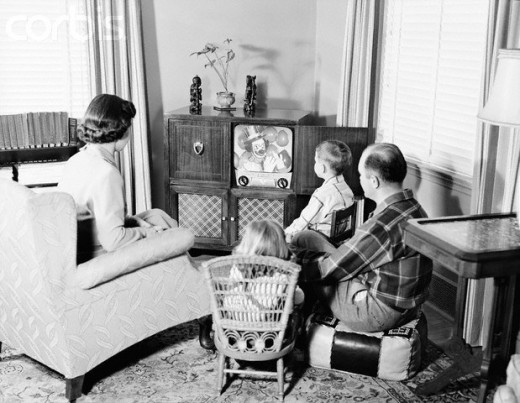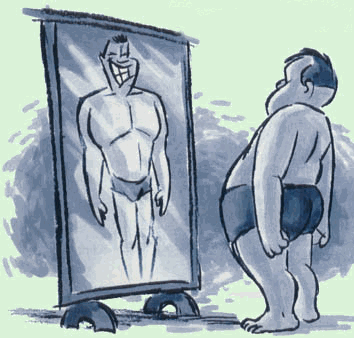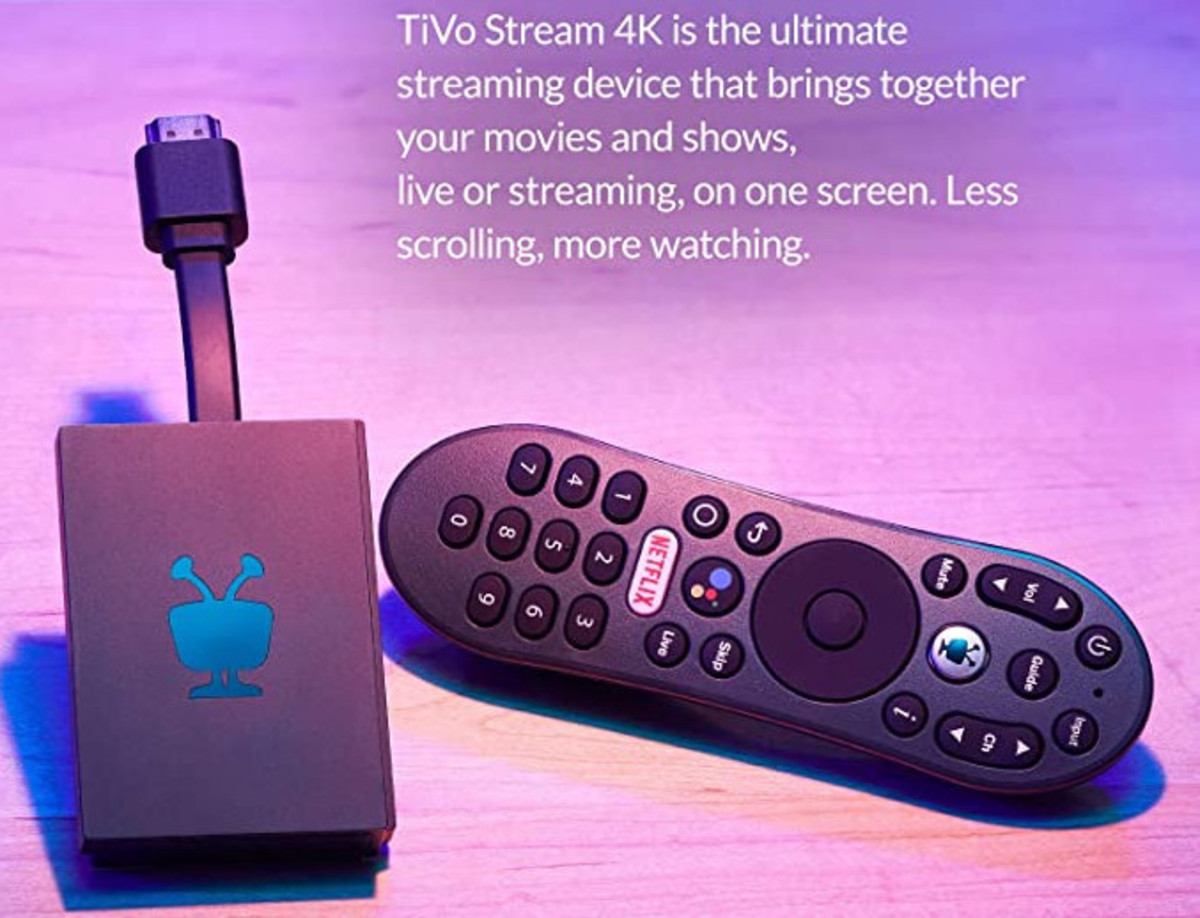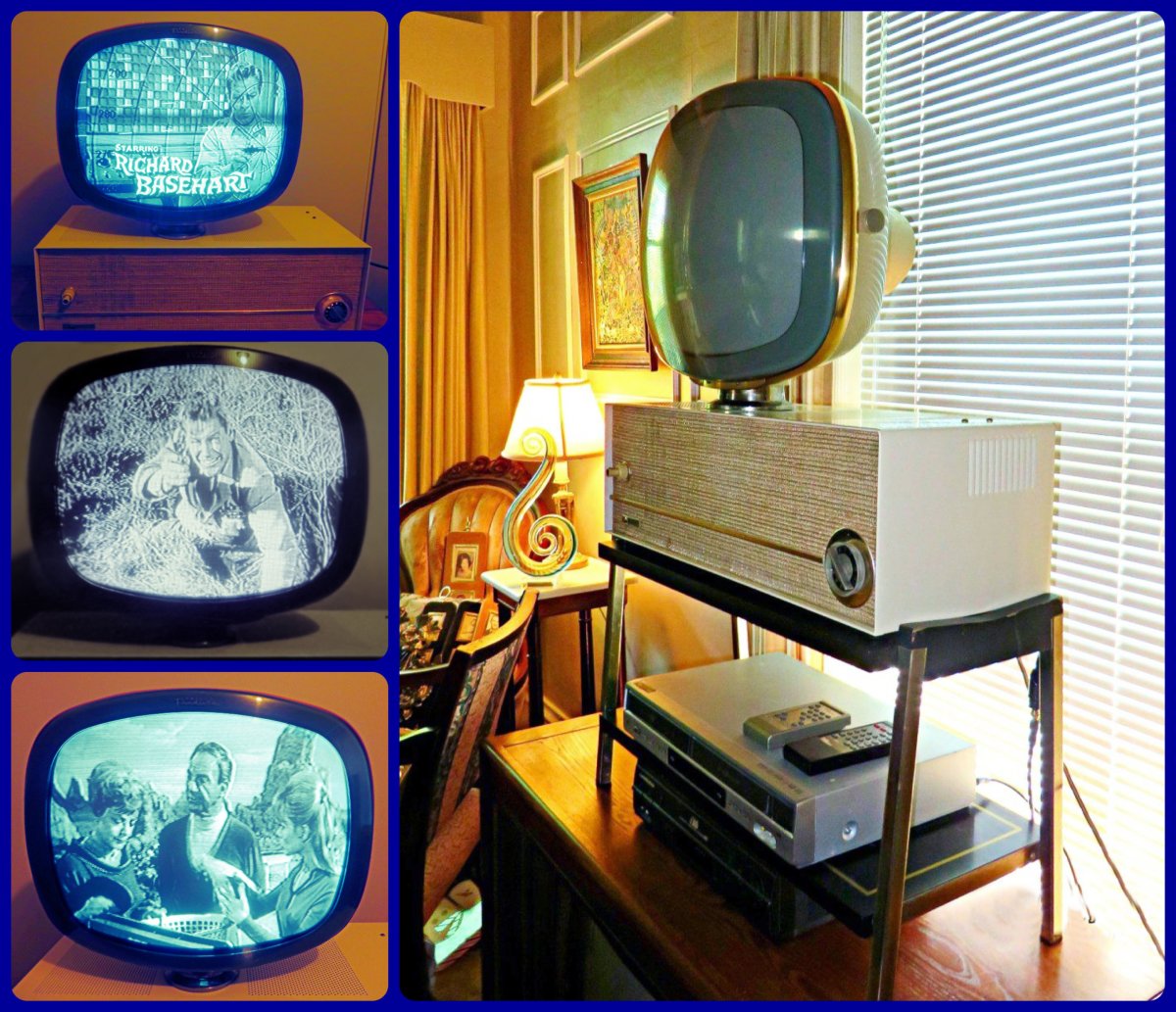Streaming: The Life and Death of Television

Television
At the birth of television it was common for families to gather around every evening and enjoy the programming as designated by each network. Unlike the plethora that makes channel surfing possible today there were three main networks to choose from at the start. NBC, CBS, and ABC were the main broadcasters of radio and at the advance of video broadcasting they expanded into television. By the 1950's they were the major networks in America's homes and continued to be until the introduction of cable broadcasting.
The inclusion of TV in the home was like adding a member to the family. It became a source of entertainment and information with family sitcoms and comedy hours to the nightly news that would provide relaxation and occasional discourse for households across America. During the day, soap operas were played to provide the housewife with entertainment and useful tips on how to keep a clean and happy home. As a result of the 9 to 5 work routine, the prime programs occurred in the evenings when everybody was home, it became known as Primetime. These programs generally consisted of 'T.V. families' wholly representing the American Dream. Popular during this time was The Jack Benny Program (1950-65), The Honeymooners (1955-56), Father Knows Best (1954-60), Leave it to Beaver (1957-63).
Did you know?
- Networks originally broadcast on the East Coast through a series of wired chains that connected the stations this was called "chain broadcasting".
- The FCC placed a limit on the number of stations a networks can own, this is why local stations are independently owned and only affiliated with a specific network.
- Cable was originally used as a source for better reception of television stations.
Television has remained as an important part of culture and as times change it has grown and adapted to suit their desires. With the grand expansion into cable the viewing habits of Americans increased substantially. Appointment television was a part of normal life.
In the 1970's television hit its big boom of interactivity. The popularity of game shows grew creating a new genre to compete with soap operas during the morning and afternoon programming. Notable game shows include Match Game, Hollywood Squares, $100,000 Pyramid, The Price is Right, and Family Feud. The newscasts of the 1970's were high quality and cutting edge entertainment. In a reversal from the hard reporting of the 1960's. In addition to these there were variety shows with big celebrity guests, and the beginning of the 'tv movie' in an effort to keep audiences out of the theatres and prolong the experience.
When the decade changed hands and it became 1980 the networks were joined by an addition to the medium, cable television. This new pay option offered families access to hundreds of channels with different programming that was specific to its content. The beginning of 24 hour news, movie channels channels and the added luxury of no commercials provided by certain channels only added to the addiction in a generation that was raised by television. The 1980's and 1990's saw an increase in family and children oriented programming as new cable channels devoted specifically to them, such as The Disney Channel, The Cartoon Network, or Nickelodeon took off. Shows like Family Matters (1989-98), and Home Improvement (1991-99) were popular as well as witty comedies like The Golden Girls (1985-92), The Nanny (1993-99) and Will and Grace (1998-06). Children would entertain themselves with after school specials and cartoons, and watch family programming in the evenings during or after dinner. The TV is always on.
Currently, much of television is focused on the newly defined 'reality' in which 'regular people' are placed in an irregular environment and there-out filmed for 6-8 weeks. Shows like Big Brother (1999-), Survivor (2000-), Here Comes Honey Boo-Boo (2012-), Duck Dynasty (2012-), and the popular chain of 'real housewives' from wealthy parts of the country are what is consumed by the public, in addition to the singing competition shows abounding. Additionally, there are networks in abundance to choose from for entertainment, many of which have similar programming to each other. It can be overwhelming to make a decision. While quality content is being created by networks, they are not easily available for the public to watch as cable limits the consumer, and work schedules have swayed into varied times. A conclusive argument identifying television as an out of control monster in a labyrinth of doom can be made.
As competition looms, television seems to be entering a renewed golden age. But will this last? Viewers are now seeking out other options for their programming that suits the busy lifestyle so many are accustomed to. If this continues on the current path will the networks cease to exist? Or will they remain in name but transform to fit the new internet based, high speed society that we have become?
To Stream, or Not to Stream
Netflix, Amazon Prime, Hulu, and multiple other internet based video services have entered the picture since the normalization of the internet into culture. It only furthers the idea of a global television addiction that when a technological advancement for information storage and communication is created, such as the internet, people immediately expand the uses to image based entertainment. For as quickly as television was excepted into the homes of families streaming devices were welcomed as long lost brothers finding their way back. Holding our favorite films and television shows as hostage, we willingly purchase subscriptions to unlock the magic.
These have birthed new watching trends that allow viewers to create their own schedule by streaming content from the internet. Content is available on numerous devices from multiple providers and as a result people are never far from their favorite show. It is possible to watch content produced from anywhere in the world, creating an even larger market to play in. Each of the streaming services have developed a quality line-up of original content that makes them standout as direct competitors to traditional networks. There are side-effects to every new advancement. The simplicity to access the content can lead to isolation or brief periods of introverted behavior during 'binge-watching'. In just the opposite these services can be socially engaging and create interaction between friends as they gather around to watch seasons of popular shows or use social networking to communicate with others who share their similar interests. The topic of social media plays a large role in this overall scheme, as it relays directly to the internet which in thought can be held responsible for these advancements in our resting pleasures..
Television: Scandal
Streaming: Orange is the New Black
The Reality of Television
Is it possible for television to reinvent itself and compete with the popularity of streaming? It does have the additional outpost of social media to engage its viewers with each other as they air, but is this enough to keep them watching? There is success in the cinematic dramas and entertaining comedies being put out but there still seems to be a greatest common factor in the reality/competition show programming, In this display it seems a last bit of irony as we spend much of our own realities watching the lives of others on TV. For now, television is doing fine with their content, but when the world is finished with 'reality' where will it be?









